
This parent guide supports parents in helping their child at home with the 7th grade Science content.
- Subject:
- Science
- Material Type:
- Reference Material
- Vocabulary
- Author:
- Kelly Rawlston
- Letoria Lewis
- Date Added:
- 10/11/2022

This parent guide supports parents in helping their child at home with the 7th grade Science content.

This resource accompanies our Rethink 7th Grade Science course. It includes ideas for use, ways to support exceptional children, ways to extend learning, digital resources and tools, tips for supporting English Language Learners and students with visual and hearing impairments. There are also ideas for offline learning.

This lesson is about cleanroom technology and accompanies the Genesis mission cleanroom video, Cleanroom Technology: NASA Genesis Mission, available on the Genesis outreach Web site. Learners will understand the conditions that are necessary for the assembly of the spacecraft scientific payload. Includes a teacher's guide and students handouts. Video and audio clips are provided. This lesson 2 of 10 from the Dynamic Design: The Cleanroom module - although it can also serve as a stand-alone lesson.

Students will design a working trebuchet for maximum accuracy, distance and force using the engineering design process. Students will utilize the measurement formulas to calculate kinetic and potential energy and therefore create a trebuchet for a specific function (ex: hitting a target, knocking down a wall or launching for distance).
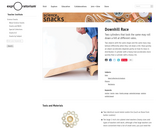
In this activity, students explore how two cylinders that look the same may roll down a hill at different rates.

In this STEM lesson, students will use a pattern to design and build a robotic rover with cardboard and a balloon. They will investigate the engineering challenges of wheels, speed, and friction while they examine the concept of a prototype in engineering. Students will demonstrate the use of potential and kinetic energy and explain ways the rover can be used in space travel and exploration.

With this resource, students will read about potential and kinetic energy and answer questions.
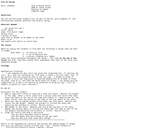
Students will define, give examples of, and differentiate between potential and kinetic energy.

Students learn the fundamental parts of a windmill, how different rotor designs affect performance, and how energy is transferred from wind into usable mechanical energy. Students will use the engineering design process and the scientific method to design, build, test, and improve their models.
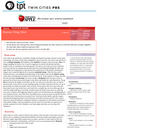
Students view a video and participate in discussion to explain the phsyics behind bungee attractions such as the ejector seat ride.

In this lesson, students are introduced to energy transfer and tansformation by examining examples and then building their own Rube Goldberg machine.

In this lesson, students learn how wind energy i transformed to mechanical energy using windmills to capture the wind.

In this lesson, students learn how energy from water is transformed to mechanical energy using water wheels to move the water.
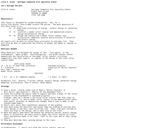
Students will design and explain how a model roller coaster uses acceleration, momentum, gravity and principles of potential and kinetic energy.

This is the educator's guide for a set of activities that teach students about humans' endeavors to return to the moon. The emphasis is for students to understand that engineers must "imagine and plan" before they begin to build and experiment. Each activity features objectives, a list of materials, educator information, procedures, and student worksheets. Students should work in teams to complete the activities. Note: Activities do not align to all objectives that are listed; specific activities align to specific objectives.
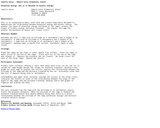
This lesson demonstrates the relationship between potential energy and kinetic energy. Students will use toy cars and ramps to investigate the concepts.
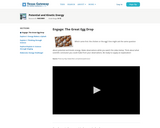
This resource is a compilation of text, videos, and other elements to create a scaffolded 5E learning experience for students. With this resource, students explore potential and kinetic energy.

This course was created by the Rethink Education Content Development Team. This course is aligned to the NC Standards for 7th Grade Science.

This course was created by the Rethink Education Content Development Team. This course is aligned to the NC Standards for 7th Grade Science.

This course was created by the Rethink Education Content Development Team. This course is aligned to the NC Standards for 7th Grade Science.